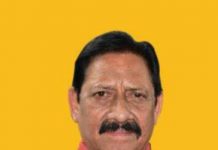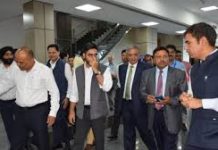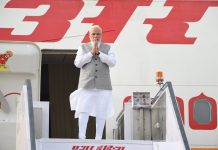 Seventy has a sacred meaning in the Bible, as it is made up of the factors of two perfect numbers, seven (representing perfection) and ten (representing completeness). As such, it symbolises perfect order and a period of judgment.
Seventy has a sacred meaning in the Bible, as it is made up of the factors of two perfect numbers, seven (representing perfection) and ten (representing completeness). As such, it symbolises perfect order and a period of judgment.
The timing of the current issue of Tehelka (August 1-15) that is in your hands now has a special significance as India would be celebrating its 70th Independence Day. It is time to do some introspection into India’s growth story — India after independence till 1991 and the period after launch of reforms. When India attained independence, it was marred by poverty, illiteracy, lack of inclusive growth and widespread corruption.
Seventy years later, the scars of Partition live on in the public memory. Two wars and an emergency mark the later period. In 1975, a state of internal emergency was declared in the country by the then president of India Fakhruddin Ali Ahmed, on the advice of then prime minister Indira Gandhi. That single order granted full power and authority to Indira Gandhi to rule by decree. In independent India’s history, this period was the most despicable, considered as a blot on democracy and a black day in Indian history. Unemployment, corruption, illiteracy, lack of social security, brain drain, terrorism, scattered development, tardy agriculture growth marked the period from 1947 to 1991.
Before 1991 and later
The period after 1991 is marked by swift reforms. In his maiden speech as the union finance minister, Singh quoted one of France’s the greatest writers, Victor Hugo: No power on earth can stop an idea whose time has come. About 25 years later, India is among the world’s fastest economies and an emerging third world leader. There still are issues like poverty, corruption, unemployment, lack of social security, gender inequality but there are positives like a growing middle class, gradual phasing away of subsidies and a burgeoning economy that is the envy of developed nations. India has emerged as a potential superpower, the only Asian power that can overtake mighty China in the 21st century.
Little doubt that today the US ensured India’s entry into the nuclear club. Not only that, the US-backed India to the hilt for a permanent seat in the UN Security Council. India in 2016 is a member of G20, the group of most powerful nations in the world. However, when India’s journey for globalisation began in 1991, our country was a member of G77, a group of developing countries. A line of credit of $10 billion to Africa, $2 billion to Bangladesh shows how Indian economy is shaping up. Remittances from NRIs total $73 billion a year, and foreign direct and portfolio investment often exceed $60 billion per year. Commercial loans exceed $35 billion. Its per capita income has shot up from $375 in 2011 to $1,700 today, taking it from low-income to middle-income status. India is now the third-largest economy in the world after China and the US. The best part is that India’s growth rate has exceeded that of all European economies and Japan.
Between 1991 and 2016, a record 138 million Indians were raised above the poverty line. The journey is poised to be faster after 2016 in view of the current pace of growth. China was earlier hailed for raising 220 million people above the poverty line between 1978 and 2002. However, India’s rate of poverty reduction was much faster. Before 1991, India begged for food aid if the monsoon failed. When it suffered two successive droughts in 1965 and 1966, mass starvation was avoided only by US food aid. The Green Revolution changed that, and private seed production further improved productivity after 1991.
India suffered two successive droughts in 2014 and 2015. Yet this time, it remained a net food exporter. It became the world’s largest rice exporter in 2014. Post independence till 1991, it took years to get a telephone landline connection. With the mobile phone revolution, India by now has reached the level of the third largest smartphone market in the world. Significantly, India has the triple distinction- over a billion cellphones, instant availability coupled with cheapest telecom rates in the world. Even people below the poverty line have mobile phones. By 1991 only 20 percent of Indians had a TV set. Now two-thirds do. In 1991, Doordarshan had a TV monopoly. Today, the country has close to 1,000 TV channels.
India is set to experience a dynamic transformation as the population explosion would not be a liability but an asset turning into a demographic dividend. Women’s empowerment has added to its strength
NaMo wave
Now to mark two years of the Narendra Modi government, the Centre for Media Studies conducted a survey which suggested that Modi’s performance as the Prime Minister was liked by a vast majority (62 percent) and a big majority (70 percent) wished him to continue as the Prime Minister for another five-year term. Modi’s initiatives to improve administration and country’s image globally have received big thumbs ups from a majority of people. The survey encompassed 15 states and covered both the rural and urban population. Public perception of the Modi government is of corruption-free governance, a successful cleanliness drive named Swachh Bharat Abhiyaan and an excellent global rapport and a positive dialogue with Pakistan.
Youngest country
India at 70 is looking towards its young population with hope. Every third person in India today is a youth. Behold, in the next seven years, the average age of individuals in India would be 29 years. That would make India the youngest country in the world. In fact, India is set to experience a dynamic transformation as the population explosion would not be a liability but an asset turning into a demographic dividend. Women’s empowerment has added to the strength of India.
On the infrastructure front, the Indian road network has become one of the largest in the world, with the total road length increasing from 0.399 million km in 1951 to 4.24 million km now. Moreover, the total length of the country’s national highways has increased from 24,000 km (1947-69) to 92,851 km. After seven decades of Independence, India has emerged as the third largest producer of electricity in Asia. It has increased its electricity generation capacity from 1,362 MW in 1947 to 1,13,506 MW.
Parliament has made elementary education a fundamental right for children in the age-group of 6-14 years. At independence, India’s literacy rate was a paltry 12.2 percent, which increased to 74.04 percent, as per Census 2011. A decrease in death rates is considered one of the major achievements that came India’s way in this sector. While life expectancy was around 37 years in 1951, it almost doubled to 65 years by 2011. After a long-drawn struggle, India has finally been declared a polio-free country. Independent India has taken confident strides in its road to scientific development which began with the launch of its first satellite Aryabhatta in 1975. Its first mission to Mars was launched in November 2013, which successfully reached the planet’s orbit on 24 September 2014. India is also aggressively pursuing both nuclear and missile programmes. India@70 is looking at a total transformation in all spheres. India is changing radically and it can be observed in attitudes, aspirations and ambitions of its people. Old orders have broken down and new worlds are being created.
letters@tehelka.com












